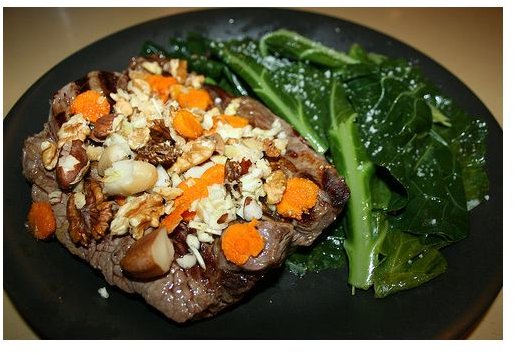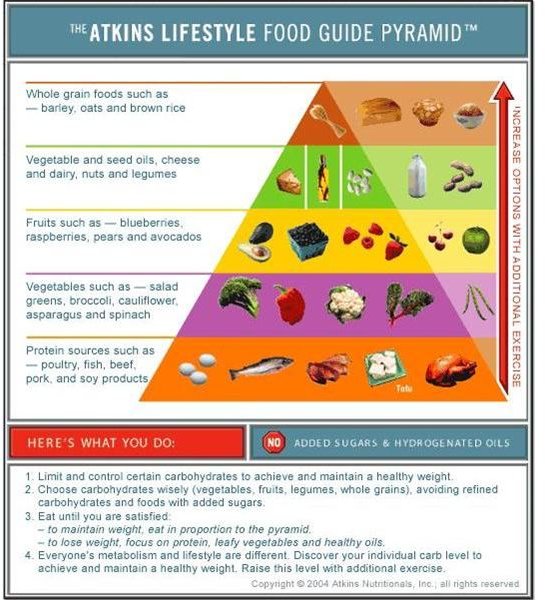What are the Foods You Can Eat in the Atkins Diet Induction Phase?
The Atkins induction phase can last from two weeks to a year; depending on the amount of excess weight that you want to lose. As long as you follow the instructions, and eat only the foods you can eat in the Atkins diet induction phase down to a tee; you can lose up to 10% of your body fat in the first two weeks. Experts recommend sticking with the induction phase until you lose 50% of your desired weight loss before you go to the Ongoing Weight Loss phase. The Atkins induction phase is simple and exact – no alterations, no substitutions, and no treats. Nevertheless, with the list of goodies you can eat and the varied Atkins recipes, who needs to cheat?
Atkins Induction Phase Food List Made Simple

Atkins dieting modified diets by switching the body’s primary energy source to fat burning rather than carbohydrate burning. Not only does it control hunger by balancing blood sugar, it also reduces food addiction to wheat, sugar, caffeine, grain, alcohol, and other unhealthy foods. Here’s a summary of the dos and don’ts of the Atkins diet induction phase:
-
Eat three to six mini meals a day, depending on how hungry you feel. Never skip meals and do not allow yourself to function more than six hours without food.
-
Natural fats and oils are important to keep a nutritionally balanced diet. Consume plenty of omega-3 fatty acids, olive oil (virgin or extra-virgin), canola, grape seed, and peanut oil (for frying). Stay away from corn, safflower, sunflower, or soy oil except when not heated and in small amount. Expeller-pressed or cold-pressed oils are highly recommended.
-
Protein – opt for meat, eggs and seafood.
-
Cheese – only 3-4 ounces, but not farmer’s cheese, cottage cheese, and fresh cheese.
-
Carbohydrates - have 20 grams or fewer a day. Choose good carbohydrates such as vegetables and salad greens. You can have approximately one cup of vegetables and two cups of salad greens or 3 cups of salad greens.
-
Vegetables – 12-15 grams of carbs should come from veggies.
-
Beverages – water, water, and water. Keep away from sugar – use Splenda or drink diet sodas. Caffeine slows weight loss and triggers cravings, so opt for decaf beverages.
-
Read the labels. Never assume the amount of carbohydrates; always inspect the carb count or utilize a carb gram counter. Consume only what you can eat – enough to satisfy your hunger but not stuffed. Adjust the amount to your appetite; this is especially important as the need to eat decreases. Since one cannot go without food for more than six hours, eat a small snack, preferably controlled carbohydrates to supplement nutritional needs.
-

Follow the list of acceptable food for Atkins induction phase exactly. Do not eat anything that isn’t on the list. No “one bite won’t hurt” or “just this once” – these rationalizations are the kiss of death in the Atkins induction phase.Keep away from fruits, pasta, grains, bread, dairy products (controlled amount) and starchy vegetables. Absolutely, no seeds, nuts, or proteins with carbohydrates such as kidney beans, legumes, and chickpeas.
-
When eating out, be wary or stay away from food with sauces, dressings, and gravy, unless it is stated that dressings are sugar free and the restaurant used xanthin gum to thicken gravy and sauces instead of cornstarch or flour.
-
Avoid sweeteners like aspartame in foods and drinks. Opt for saccharin or sucralose (Splenda) sweeteners. One packet of Splenda is equal to one gram of carbohydrates.
-
Breath mints, chewing gum, cough drops, and cough syrups should also be avoided as they have sugar and other caloric ingredients.
-
You can consume small amounts of lime or lemon juice, heavy cream or sour cream, olives or avocado, but count the carbohydrates and keep the potion to a minimum.
-
Drink eight glasses or more water every day to wash out the result of burning fat, hydrate your body, and avoid constipation. In case of constipation, drink a cup of water with a tablespoon of psyllium husks; add wheat bran on your salad; or eat vegetables, or sprinkle ground flaxseed in juices or shakes.
-
Take multivitamins with good minerals such as magnesium, calcium, and potassium. Make sure multivitamins do not contain iron.
What You Can Expect in Atkins Diet Induction Phase
The first week may be a little difficult for some due to the rules and restrictions of foods you can eat in the Atkins diet induction phase – especially for those who normally consume lots of caffeine and sugar. During withdrawal, you may experience “induction flu”, which includes headache, nausea, muscle cramps, diarrhea, and “brain fog” (so avoid driving). Don’t worry, these symptoms are temporary. In fact, after the first week, you feel more energized, happy, and less hungry. Just take it to heart and tough it out – soon you will wake up to a healthier, sexier you!
Disclaimer
This is not a medical advice and not meant to treat, diagnose, prescribe or cure any ailment. Check with your physician first before following any advice you have read on BrightHub.com. Consult your doctor before you start, stop or change anything that has been previously prescribed to you.
Image Credits
size8jeans - https://farm3.static.flickr.com/2774/4458728458_c95ff02e84.jpg
daBinsi - https://farm4.static.flickr.com/3466/3207275087_33d503a895.jpg
kteague - https://farm3.static.flickr.com/2772/4184011798_c6382fa633.jpg
